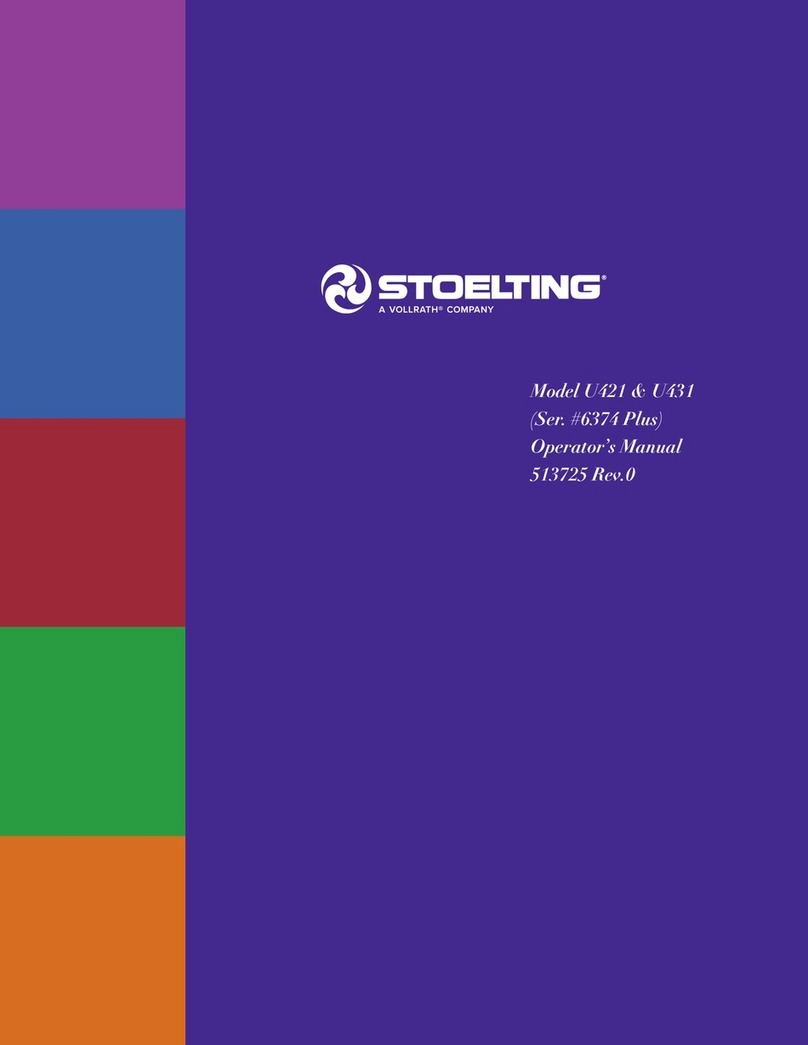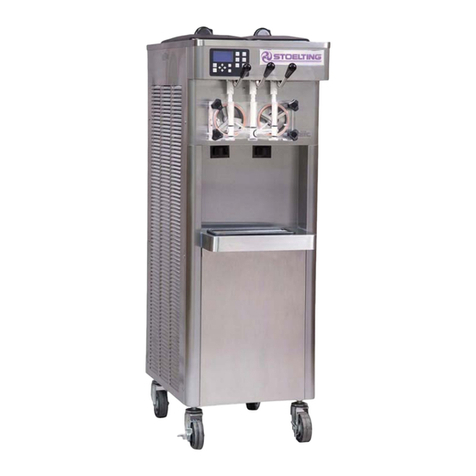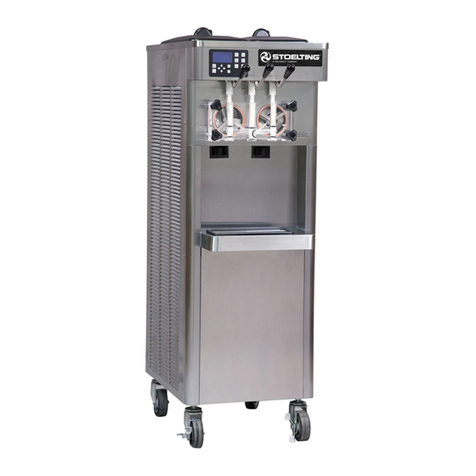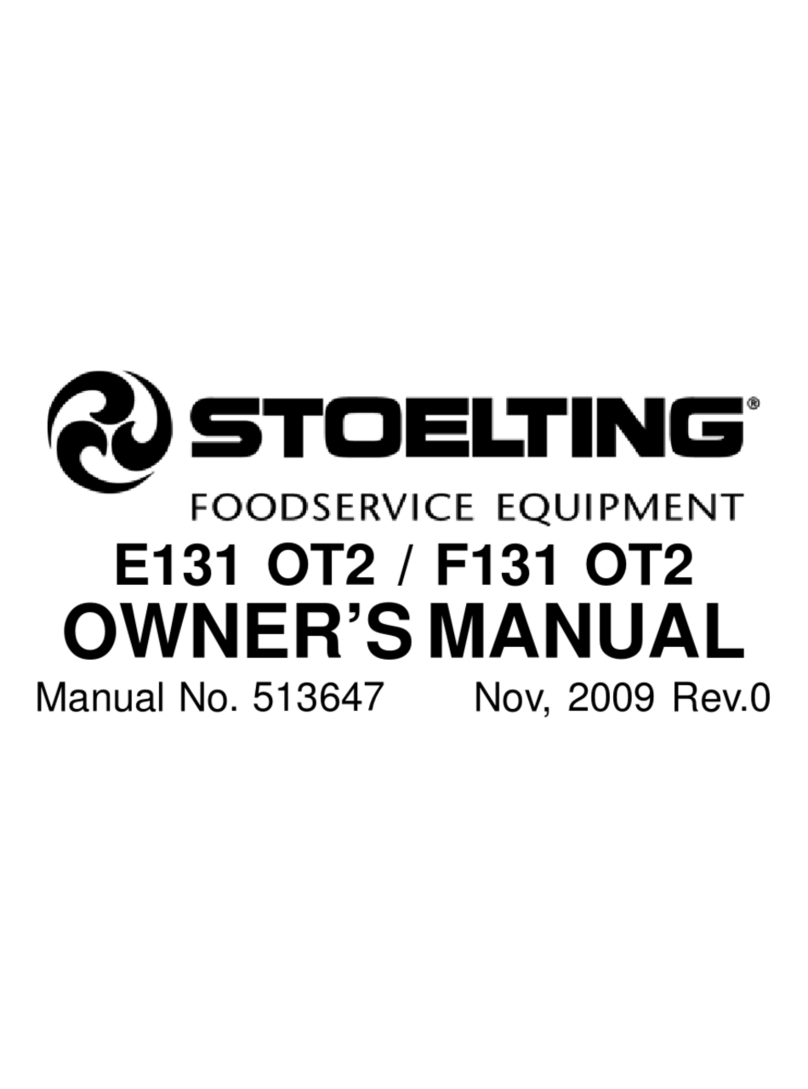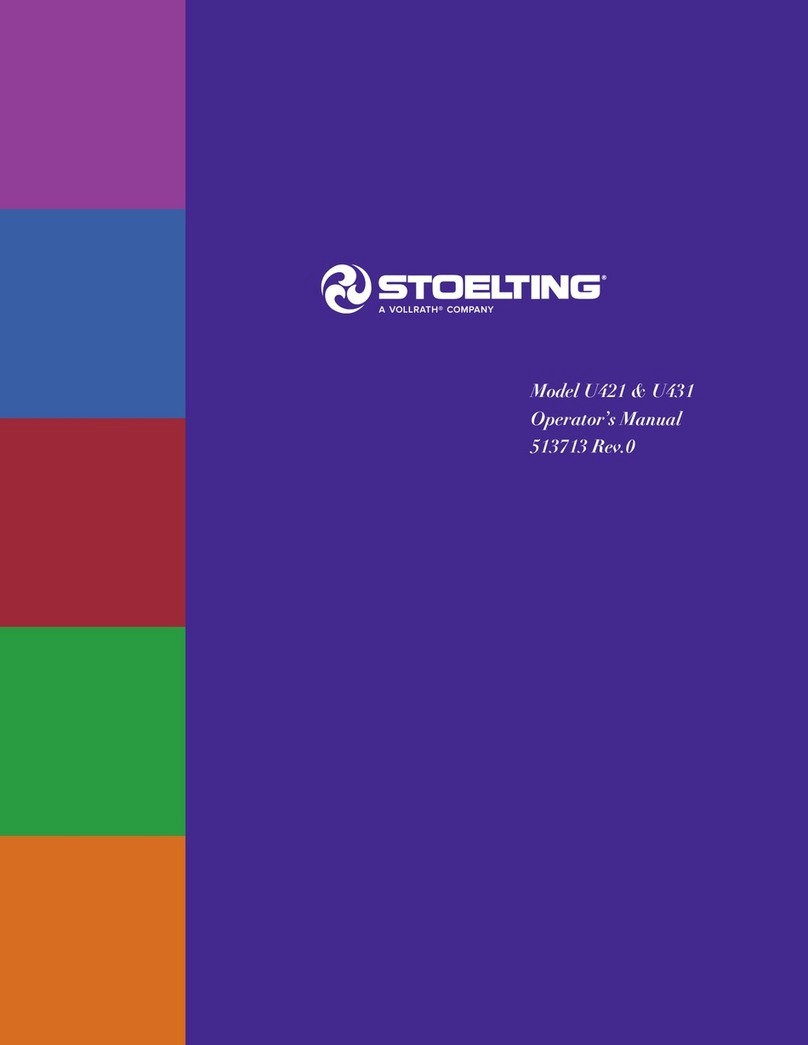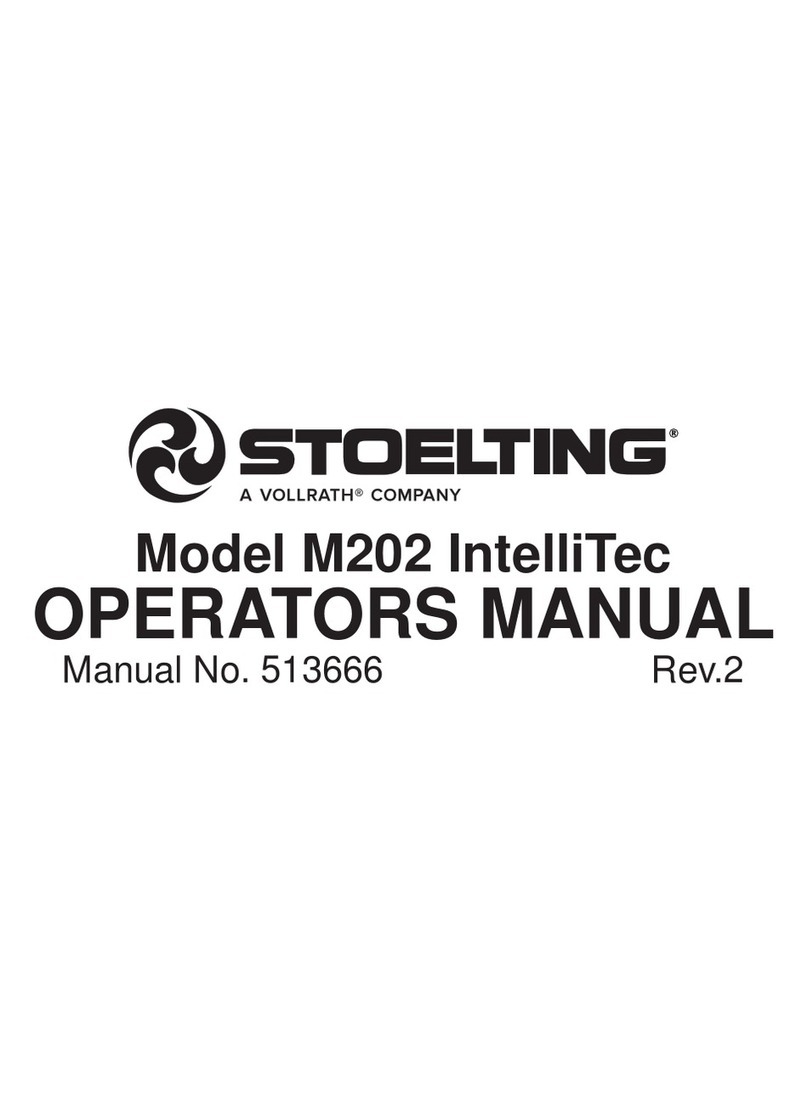
Owner’s Manual #513642 2 CC Model Machines
1.2 SPECIFICATIONS CC202A Air Cooled Remote CC202A Water Cooled
Dimensions Machine with crate Machine with crate
width 25-1/2’’ (64,8 cm) 44-1/2’’ (113,0 cm) 25-1/2’’ (64,8 cm) 44-1/2’’ (113,0 cm)
height 61-7/8’’ (157,2 cm) 67’’ (170,2 cm) 61-7/8’’ (157,2 cm) 67’’ (170,2 cm)
depth 47-1/8’’ (119,7 cm) 60’’ (152,4 cm) 47-1/8’’ (119,7 cm) 60’’ (152,4 cm)
Weight 632 lbs (286,6 kg) 707 lbs (320,6 kg) 930 lbs (421,8 kg) 1005 lbs (455,8 kg)
Electrical 1 Phase, 208-240
VAC, 60Hz 3 Phase, 208-240
VAC, 60Hz 1 Phase, 208-240
VAC, 60Hz 3 Phase, 208-240
VAC, 60Hz
circuit ampacity
(per barrel) 12A minimum 9A minimum 29A minimum 19A minimum
overcurrent protection
device (per barrel) 25A maximum 15A maximum 50A maximum 30A maximum
Hopper Condensing
Unit 1 Phase, 115 VAC, 60Hz
NEMA5-15P power cord provided
Drive Motor Two - 3 hp
Cooling
Air cooled units require one remote
condensing unit (with compressor) per
barrel. Condensing units #285092 and
#285093 ship from the factory with 20 lbs
of R-404A for up to a 50’ line set.Add 1
lb of refrigerant for every 10’ increase to
the line set. Line set max 100’. (Remote
condensers CU-0010 and CU-0020 do
not ship charged and require 24 lbs of
R-404A)
Water cooled units are self contained and
require a Standard Hose Adapter water
fitting and a 1/2” OD drain fitting for each
barrel. They are charged with R-404A.
Maximum water pressure of 130 psi
Minimum water flow rate of 3 GPM
Ideal EWT of 60°-80°F
Hopper Volume Two - 8.8 gallon (33,32 liters)
CC303A Air Cooled Remote CC303A Water Cooled
Dimensions Machine with crate Machine with crate
width 32-1/2’’ (82,6 cm) 44-1/2’’ (113,0 cm) 32-1/2’’ (82,6 cm) 44-1/2’’ (113,0 cm)
height 61-7/8’’ (157,2 cm) 67’’ (170,2 cm) 61-7/8’’ (157,2 cm) 67’’ (170,2 cm)
depth 47-1/8’’ (119,7 cm) 60’’ (152,4 cm) 47-1/8’’ (119,7 cm) 60’’ (152,4 cm)
Weight 895 lbs (405,9 kg) 970 lbs (439,9 kg) 1345 lbs (610,0 kg) 1420 lbs (644,1 kg)
Electrical 1 Phase, 208-240
VAC, 60Hz 3 Phase, 208-240
VAC, 60Hz 1 Phase, 208-240
VAC, 60Hz 3 Phase, 208-240
VAC, 60Hz
circuit ampacity
(per barrel) 12A minimum 9A minimum 29A minimum 19A minimum
overcurrent protection
device (per barrel) 25A maximum 15A maximum 50A maximum 30A maximum
Hopper Condensing
Unit 1 Phase, 115 VAC, 60Hz
NEMA5-15P power cord provided
Drive Motor Three - 3 hp
Cooling
Air cooled units require one remote
condensing unit (with compressor) per
barrel. Condensing units #285092 and
#285093 ship from the factory with 20 lbs
of R-404A for up to a 50’ line set.Add 1
lb of refrigerant for every 10’ increase to
the line set. Line set max 100’. (Remote
condensers CU-0010 and CU-0020 do
not ship charged and require 24 lbs of
R-404A)
Water cooled units are self contained and
require a Standard Hose Adapter water
fitting and a 1/2” OD drain fitting for each
barrel. They are charged with R-404A.
Maximum water pressure of 130 psi
Minimum water flow rate of 3 GPM
Ideal EWT of 60°-80°F
Hopper Volume Three - 8.8 gallon (33,32 liters)












